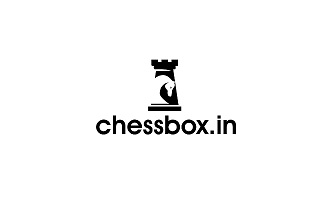How are the chess pieces set up on the board at the beginning of a game?
The board consists of 64 squares, and each player starts with 16 pieces. The setup, from left to right, for each player is: Rook, Knight, Bishop, Queen, King, Bishop, Knight, Rook. The eight pawns are placed in a row in front of these pieces.
How does the King move in chess?
The King can move one square in any direction: horizontally, vertically, or diagonally. However, it cannot move to a square that is attacked by an opponent’s piece.
What are the moves of a Queen?
The Queen is the most powerful piece in chess. It can move any number of squares in a straight line, horizontally, vertically, or diagonally.
How do Rooks move on the chessboard?
Rooks can move any number of squares horizontally or vertically in a straight line, but they cannot jump over other pieces.
What are the moves of a Knight?
Knights move in an “L” shape: two squares in one direction (horizontally or vertically) and then one square perpendicular to the first move. Knights are the only pieces that can “jump” over other pieces on the board.
How do Bishops move on the chessboard?
Bishops move diagonally and can travel any number of squares along those diagonals. Each player starts with two bishops: one on a light-colored square and one on a dark-colored square.
How do pawns move in chess?
Pawns move forward one square at a time, but on their first move, they have the option to move forward two squares. Pawns capture diagonally, one square forward and to the left or right. Pawns can’t move backward.
Can pawns move backward or capture backward?
No, pawns can only move forward and capture diagonally forward.
What happens when a pawn reaches the opposite end of the board?
When a pawn reaches the opposite end (the eighth rank), it can be promoted to any other piece except a king. The most common promotion is to a queen.
What is “castling” in chess?
Castling is a special move that involves the King and one of the Rooks. It is the only move in chess where two pieces move at the same time. The King moves two squares towards the Rook, and the Rook jumps over the King to the square next to it. There are some conditions for castling: neither the King nor the Rook should have moved previously, there should be no pieces between them, and the King should not be in check.
Can a piece move through other pieces on the board?
No, with the exception of the Knight, pieces cannot move through other pieces. They can only move to an unoccupied square or capture an opponent’s piece.
Can you move your King into check?
No, it’s not allowed to move your King into a square that is attacked by one or more of your opponent’s pieces. This is considered an illegal move.
How long does a standard chess game last?
A standard chess game typically lasts anywhere from 15 minutes to several hours, depending on the time control used. Tournament games usually have longer time controls, while online games or casual games might have shorter time limits.
What are the different types of time controls in chess?
There are various time controls in chess, including blitz (typically 3-5 minutes per player), rapid (usually 10-30 minutes per player), and classical (often 60 minutes or more per player with additional time increments after each move). Time controls determine the overall duration of the game and affect players’ decision-making process.
Can a player touch a piece and then change their mind about the move?
In official chess rules, the “touch-move” rule applies. If a player touches one of their pieces with the intention of making a move, they must make a legal move with that piece if possible. However, if the player touches one of their opponent’s pieces, they must capture that piece if legally possible.
What happens if a player makes an illegal move?
If a player makes an illegal move in a game, the move is considered invalid, and they must retract the move and play a legal move with the same piece (if possible). There is no penalty for an unintentional illegal move, but repeated infractions may lead to penalties in tournament settings.
When is a chess game considered a draw?
Chess games can end in a draw for various reasons, including:
a. Stalemate: When a player’s King is not in check, but they have no legal moves available.
b. Threefold repetition: When the same position occurs three times with the same player to move.
c. Fifty-move rule: If there have been 50 consecutive moves by each player without any pawn movement or piece capture.
d. Insufficient material: When both players have insufficient material to deliver checkmate (e.g., King vs. King).
Can a player resign from a chess game?
Yes, a player can resign at any point during the game by indicating their resignation verbally or by tipping over their King. Resigning means conceding the game and accepting defeat.
What is a draw offer, and when can it be made?
A draw offer is when a player offers their opponent a draw, indicating a willingness to end the game in a draw. Draw offers can be made at any point during the game, but the opponent has the option to accept, decline, or continue playing.

